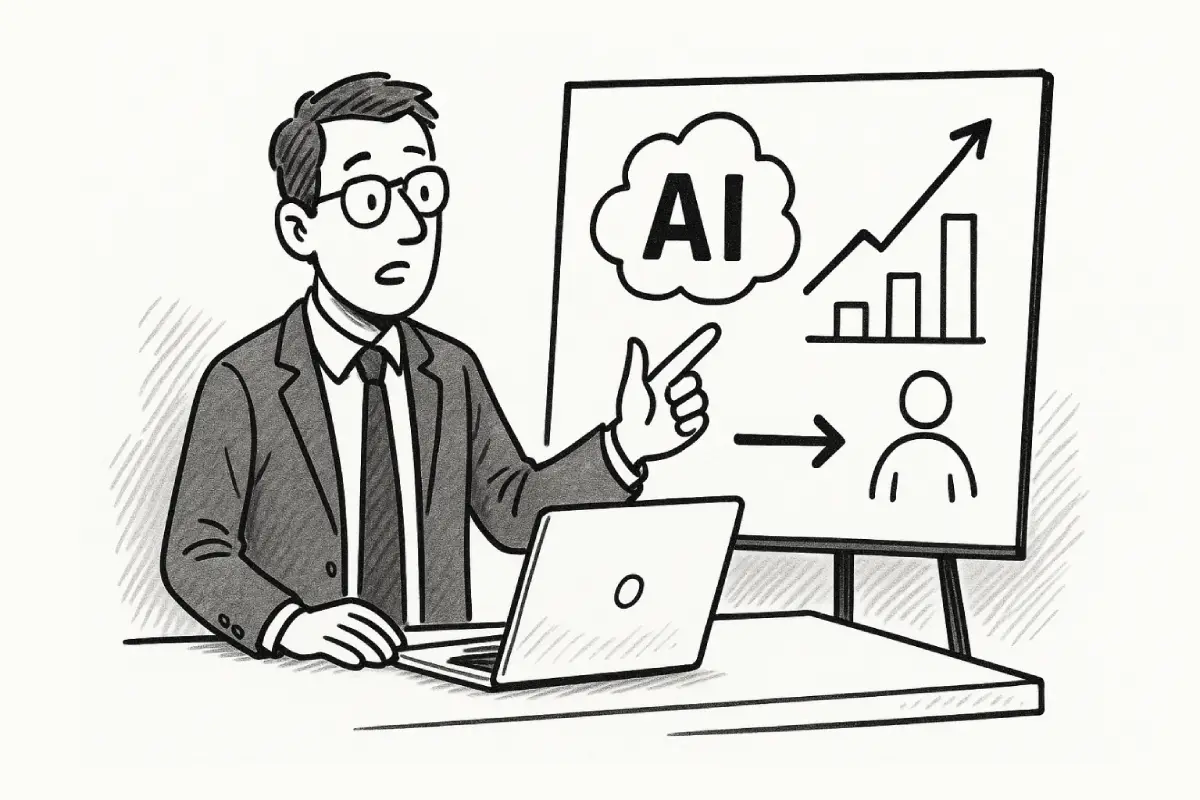The great exodus from the fluorescent-lit cubicle farms. No more soul-crushing commutes. No more passive-aggressive battles over the office thermostat. We were free, liberated into a world of pajama-bottomed Zoom calls and midday dog walks. We traded our stiff office chairs for the comfy embrace of the sofa. It was a revolution. A glorious, work-from-anywhere revolution.
But here’s the thing about revolutions. They’re messy. Unpredictable. And while we were all busy baking sourdough and perfecting our virtual backgrounds, a different kind of operator was rubbing their hands together with glee. The cybercriminal. They saw our collective sigh of relief not as a sign of progress, but as the creak of a million unlocked doors swinging wide open.
We’ve fundamentally misunderstood the bargain we struck. We thought we were just changing our location, but we were actually dismantling the fortress. Every home office—be it a dedicated room or a laptop perched precariously on a kitchen counter—became a tiny, vulnerable new outpost of the corporate kingdom. And most of them were, and still are, defended by little more than a prayer and a password that’s probably some variation of “Password123!”.
It’s a chilling thought. Really, let it sink in. The corporate firewall, that multi-million-dollar digital shield meticulously maintained by a team of IT wizards? It’s now been replaced by your off-the-shelf Netgear router from Best Buy, the one you haven’t updated the firmware on since you took it out of the box three years ago.
Your Comfy Couch: The New Corporate Hotseat (And Security Nightmare)
Let’s get down to brass tacks. Your home network is a disaster. I don’t say that to be mean; I say it because it’s almost certainly true. It’s not a fortress; it’s more like a bustling public square with no police presence. You’ve got your work laptop, sure, but what else is on there? Your partner’s phone, your kid’s tablet that’s probably riddled with malware from a dozen free-to-play games, a smart TV that hasn’t been patched since the Obama administration, and maybe even that “smart” refrigerator you bought on a whim.
Every single one of those devices is a potential doorway. A hacker doesn’t need to launch a frontal assault on your work laptop if they can just waltz in through the smart toaster. It sounds absurd, right? A toaster-based hack? But this is the world we live in. The Internet of Things (IoT) has become the Internet of Threats. These devices are notoriously insecure, often shipped with default passwords that are a quick Google search away.
“The perimeter has dissolved. For decades, we built digital walls around our companies. Now, the ‘office’ is a fluid concept, an amorphous cloud of interconnected homes, and the old security models are simply broken.”
Think about the sheer scale of the problem. A company that once had one major network to defend now has thousands. One for every employee. And the IT department, bless their hearts, can’t exactly make house calls to ensure your router settings are up to snuff. They’re flying blind, hoping—praying—that you’re not conducting sensitive business over a network secured with the Wi-Fi password “catsonly.”
This isn’t just theoretical. The 2025 Verizon Data Breach Investigations Report paints a grim picture, consistently highlighting how human error and misconfigured systems are the leading causes of breaches. We are, quite literally, our own worst enemies. We’ve traded a controlled, sterile environment for the wild, untamed chaos of our own homes. And the bad guys are loving it.
“Just Click Here”: The Phishing Lures That Got Smarter
Remember those clunky old phishing emails? The ones from a “Nigerian Prince” with terrible grammar and a story so outlandish it was almost charming? Well, they’ve grown up. They went to finishing school. They’re sophisticated now.
Phishing attacks have become hyper-personalized, wickedly clever, and devastatingly effective in the remote work era. Why? Because the context has changed. The casual, in-person checks and balances are gone. You can’t just pop your head over the cubicle wall and ask, “Hey, did you get this weird email from the boss?”
The boss is now just a name on a screen.
From Nigeria’s Prince to Your CEO’s “Urgent Request”
Today’s spear-phishing attack won’t be a generic blast. It will be a work of art. It’ll use your name. It might reference a project you’re actually working on, information gleaned from your public LinkedIn profile. It will look, for all intents and purposes, exactly like an email from your actual CEO or CFO. It will have the right logo, the right email signature. And it will convey a sense of crushing urgency.
“I’m in back-to-back meetings, can you please process this invoice for a new vendor immediately? We can’t afford any delays. Wire transfer details attached.”
Your heart jumps. You want to be helpful. You want to be efficient. The social engineering is perfect. It preys on your desire to be a good employee, your isolation, and the lack of immediate verification channels. So you click. You open the attachment. You process the payment.
And just like that, it’s over. The money’s gone. Or worse, the attachment wasn’t about an invoice—it was a payload. Ransomware. Now, not only have you sent company money to a thief, but you’ve also just encrypted your entire hard drive and potentially the company’s shared network. All because of one little click. One moment of misplaced trust.
Does this feel a bit too real? It should. This exact scenario plays out thousands of times a day. The FBI’s Internet Crime Complaint Center (IC3) is inundated with reports of Business Email Compromise (BEC), a fancy term for what I just described. It’s a multi-billion-dollar industry built on pure deception.
The Two-Headed Dragon: When Your Work Laptop is Also Your Netflix Machine
Okay, let’s be honest with each other. That sleek, company-issued laptop? It’s not just for work, is it? You’ve checked your personal email on it. You’ve done some online shopping. Maybe you streamed a movie or two after hours. Your kid might have even “borrowed” it for a school project or—heaven forbid—to play a game.
This is the BYOD (Bring Your Own Device) problem, or its equally evil twin, COPE (Corporate Owned, Personally Enabled). The lines have blurred into nonexistence. Your work device is now your life device, and that’s a security dumpster fire waiting to happen.
Every personal activity you do on that machine introduces risk. The torrented movie file that came with a side of spyware. The sketchy online quiz that asked for way too many permissions. The personal email account that was part of a massive data breach years ago, whose password you—oops—reused for something work-related.
“We treat our digital lives with a recklessness we would never apply to our physical lives. You wouldn’t leave your house keys lying on a park bench, but you’ll use the same simple password for your bank, your email, and your company’s VPN.”
Data leakage becomes almost inevitable. That sensitive corporate spreadsheet gets saved in the same cloud folder as your vacation photos. You accidentally email a client list to your cousin instead of your colleague because of an autocomplete mistake. The potential for disaster is staggering, and it stems from a simple, human truth: convenience always trumps security. Always. It’s a fundamental flaw in our wiring. We’re built to take the path of least resistance, and sometimes that path leads directly off a cliff. For a deeper dive into the numbers behind these risks, IBM’s “Cost of a Data Breach Report” is essential, and frankly, terrifying reading. You can usually find the latest version with a quick search, but here’s a link to the 2025 edition to get you started.
Burnout, Loneliness, and That Public Wi-Fi Password
We also have to talk about the human cost. The mental and emotional toll of this new world order. The initial euphoria of remote work has, for many, curdled into a mix of burnout, isolation, and low-grade anxiety. The boundaries between work and life have evaporated. The “office” is always there, beckoning from the corner of the room, a constant, silent source of pressure.
What does this have to do with cybersecurity? Everything.
A tired brain makes mistakes. A distracted brain clicks on the wrong link. A lonely brain, desperate for a change of scenery, decides to go work from a coffee shop for the afternoon.
And that coffee shop? Its free public Wi-Fi is a shark tank. You have absolutely no idea who else is on that network, sniffing the unencrypted data packets flying through the air. A “man-in-the-middle” attack, where an attacker positions themselves between you and the connection point, is trivially easy to execute on an open network. They can intercept everything—your passwords, your emails, your company’s confidential data.
Are We Our Own Worst Enemy?
It’s a perfect storm. We’re more tired, more distracted, and more geographically dispersed than ever before. This leads to “security fatigue”—that feeling of being so overwhelmed by security warnings, password requirements, and MFA prompts that you just start tuning it all out. You prop the fire door open because it’s a hassle to keep swiping your keycard.
This isn’t about blaming the victim. It’s about acknowledging a reality that most corporate security policies refuse to. You can’t just throw technology at a human problem. You can’t fix burnout with a better firewall. The greatest vulnerability in any system isn’t a piece of software; it’s the person using it. And right now, that person is not okay.
The Great Abdication: When Companies Forget Their Duty of Care
So, what have companies done in the face of this unprecedented threat? For many, the answer is shockingly little. They shipped out laptops, bought a few extra VPN licenses, and basically told everyone, “Good luck, don’t get hacked.”
It’s a profound abdication of their duty of care. A one-time, check-the-box security training session over Zoom is laughably inadequate. Security isn’t a destination; it’s a continuous process. It requires constant reinforcement, adaptive training, and creating a culture where it’s okay to raise your hand and say, “I think I messed up.”
Too many organizations still operate on a culture of fear. An employee who suspects they’ve clicked a bad link is more likely to hide it and hope it goes away than they are to report it to IT, for fear of being shamed or punished. And in cybersecurity, time is everything. The delay between initial compromise and detection is often the difference between a minor incident and a full-blown catastrophe.
The tools exist. Zero Trust architecture, robust MFA, endpoint detection and response (EDR) solutions—these things can make a huge difference. But they are not a silver bullet. They are only as effective as the culture in which they are deployed.
The remote work genie isn’t going back in the bottle. This is our new reality. The flexibility is wonderful, but we have to go into it with our eyes wide open, acknowledging the dragons that lurk just beyond the glow of our laptop screens. The real question is whether we—both as individuals and as organizations—are willing to do what it takes to fight them.
Because the dark side of remote work is this: the biggest threat isn’t some shadowy hacker collective in a faraway country. It might just be you, in your pajamas, one tired, mistaken click away from bringing the whole house of cards crashing down.
You might also like: What 5 Years of Building Jobicy Taught Me About Hiring and Careers









